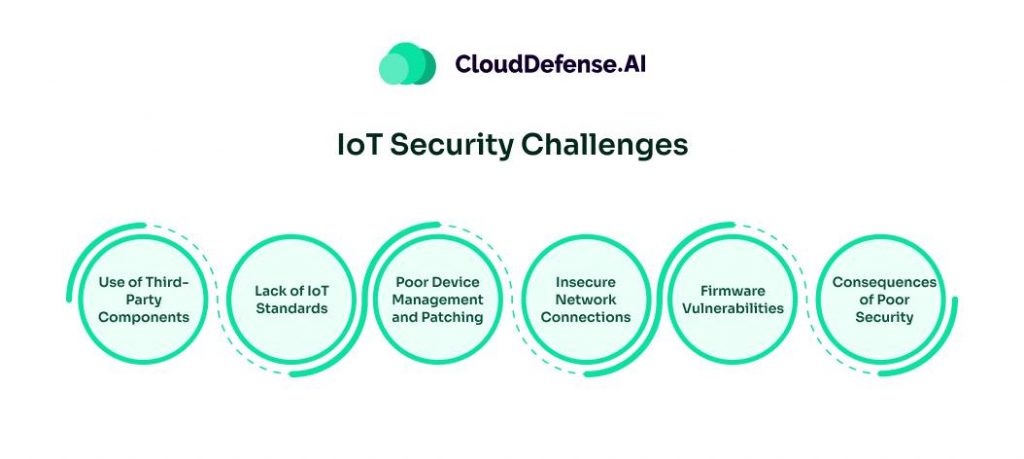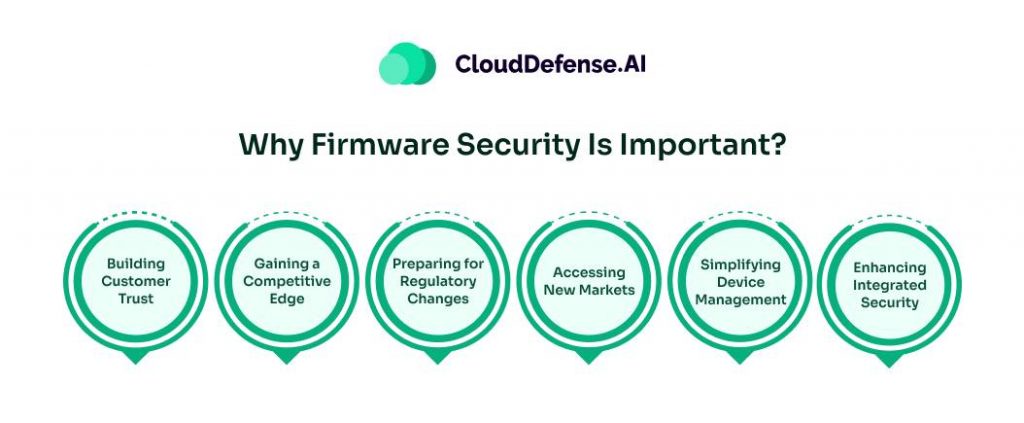What is Firmware?
Firmware is specialized software embedded in a device’s nonvolatile memory. It retains data without power and is designed for long-term stability. Unlike traditional software, firmware is installed during manufacturing.
Firmware acts as a bridge between hardware and software. It enables device functionality, supports user programs, and ensures smooth interaction with the operating system. Found in everything from smartphones to industrial machines, firmware plays an essential role in device operations and performance.
What is Firmware Security?
Firmware security involves protecting the embedded software that controls hardware devices from unauthorized access, modification, or exploitation.
Firmware, written to a device’s non-volatile memory, is essential for the basic operations of various hardware components. However, it also presents unique security challenges and vulnerabilities that demand specific and strong implementation strategies.
A 2021 Microsoft study revealed that over 80% of enterprises experienced at least one firmware attack in the two years before the report, yet only 29% of security budgets are allocated to firmware protection. This data is evident to why firmware security is a necessity today.
How Does Firmware Security Work?
Firmware security involves secure coding practices, regular updates, and intense testing to prevent vulnerabilities. Key components include secure boot processes, which ensure only trusted firmware runs at startup, and firmware integrity verification to detect unauthorized changes. Specialized security solutions monitor firmware for anomalies and provide advanced threat detection.
Integrating firmware security into overall IoT security management simplifies monitoring and protection for IoT devices. Regular firmware updates address known vulnerabilities, while secure design practices help prevent new ones. These measures ensure the firmware operates reliably and securely, protecting devices from persistent threats and unauthorized access.
IoT Security Challenges

The rise of IoT has brought remarkable convenience and connectivity, but it has also introduced security challenges. Due to several critical factors, IoT devices are especially vulnerable to cyberattacks.
1. Use of Third-Party Components
One major issue is the reliance on third-party components. IoT devices often use parts from various suppliers, creating supply chain vulnerabilities. If these components have security flaws or have been tampered with, they can compromise the entire device, exposing users to potential cyber threats.
2. Lack of IoT Standards
Another challenge is the absence of strong IoT security standards. This regulatory gap means many IoT devices fail to meet basic cybersecurity requirements. Without clear guidelines, manufacturers might not prioritize security, leading to devices that are easier targets for attackers.
3. Poor Device Management and Patching
IoT devices frequently suffer from poor management and patching practices. They are often deployed with a “fire and forget” mindset, meaning they are set up and then largely ignored. Unlike traditional computers, IoT devices may not receive regular updates, leaving vulnerabilities unpatched and exploitable.
4. Insecure Network Connections
The increased use of 5G and direct connectivity to public networks further complicate IoT security. Many IoT devices now bypass traditional enterprise security measures, making them more susceptible to attacks. Insecure network connections can be exploited to intercept data, gain unauthorized access, and manipulate device operations.
5. Firmware Vulnerabilities
Firmware security is another primary concern. Many IoT devices rely on firmware that may not have been designed with security in mind. This can lead to malware embedding itself within the firmware and remaining undetected by standard security tools. Over-the-air firmware updates are a partial solution, offering a way to patch vulnerabilities without significant disruption.
6. Consequences of Poor Security
Inadequate IoT security can have a severe impact. Attackers can spy on users, steal data, or even gain remote control of devices. In extreme cases, compromised firmware can render devices inoperable, a tactic used in notable cyberattacks such as the one on the Ukrainian power grid.
Why Firmware Security Is Important?

Firmware security is critical to protecting IoT devices. It is at the foundational level below the software. Implementing dedicated firmware security solutions can yield several key benefits for IoT device manufacturers, enhancing their market position and customer trust.
1. Building Customer Trust
Consumers prioritize the security of their devices and the protection of their sensitive data. By incorporating security measures at the firmware level, manufacturers can provide stronger guarantees of device safety, significantly boosting customer confidence.
2. Gaining a Competitive Edge
In the largely unregulated IoT industry, many manufacturers overlook cybersecurity. However, as data privacy concerns grow, having a well-secured IoT device becomes a substantial selling point. A strong security posture not only differentiates a manufacturer’s products but also appeals to a security-conscious market.
3. Preparing for Regulatory Changes
Although IoT security regulations are still developing, some regions are beginning to implement laws governing device security. By proactively adopting stringent security practices, manufacturers can ensure compliance with future regulations and minimize potential operational disruptions.
4. Accessing New Markets
Industries with stringent cybersecurity requirements need devices that meet high-security standards. By focusing on firmware security, manufacturers can expand their market reach and enter sectors that demand robust security for their networked devices.
5. Simplifying Device Management
Effective monitoring and management of IoT devices are challenging, often leading to unpatched vulnerabilities. A comprehensive firmware security solution, typically via a cloud-based platform, allows for centralized management and updates, ensuring devices remain secure and up-to-date.
6. Enhancing Integrated Security
Traditional cybersecurity solutions are often incompatible with IoT devices due to their unique requirements. A firmware security solution that integrates into a broader security platform enables more effective monitoring and management, ensuring complete protection across all devices.
Implementing IoT Firmware Security
Implementing strong IoT firmware security is crucial for protecting devices from the range of cyber threats they face. CloudDefense.AI recommends a three-step approach to enhancing the security of IoT devices and ensuring their resilience against potential attacks.
Step 1: Identifying Vulnerabilities
The first step is to identify exploitable vulnerabilities within IoT devices. CloudDefense.AI offers a vulnerability assessment tool that helps manufacturers pinpoint weak spots that hackers could target. This initial assessment is critical for understanding the security landscape and laying the groundwork for further protective measures.
Step 2: Strengthening IoT Devices
Once vulnerabilities are identified, the next step is to harden IoT devices against cyber threats. Implementing IoT firmware security is a vital part of this process. CloudDefense.AI’s top-notch tools help provide comprehensive firmware-level security, offering several key benefits:
- Runtime Protection: Ensures continuous monitoring and protection while the device is operational.
- Defense Against Zero-Day Attacks: Guards against unknown threats that exploit newly discovered vulnerabilities.
- No Source Code Required: This option simplifies the implementation process by not requiring access to the device’s source code.
- Complete Firmware Coverage: Offers extensive protection across all firmware components.
- Ease of Installation: Helps enable quick and straightforward deployment.
- Minimal Performance Impact: Maintains device performance while enhancing security.
Step 3: Managing Cybersecurity
The final step is maintaining and controlling the device’s cybersecurity. CloudDefense.AI’s state-of-the-art CNAPP can handle updates and security management from a centralized cloud-based portal. This integration ensures that devices remain secure and up-to-date with minimal user intervention.
Final Words
Firmware security should be the starting point in your quest to secure IoT devices, mainly because they lack strong security measures. Securing firmware through over-the-air updates minimizes vulnerabilities, patches bugs, and enhances the reliability and security of these devices. Implementing best practices for IoT security helps protect systems from malicious attacks, ensuring the safe and efficient operation of interconnected devices critical to our modern infrastructure and daily lives.







